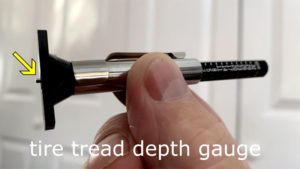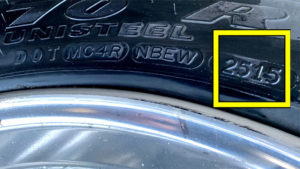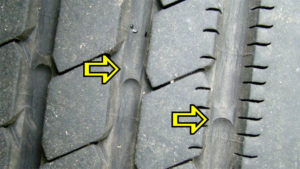rv Education 101
RV Education 101 -How to Inspect your RV Tires to Prevent Failure
Hi, I’m Mark Polk with RV Education 101. Tire failure on RVs is extremely dangerous, and it can cause extensive damage to your RV. There are lots of reasons for tire failure on RVs, like underinflation, overinflation, overloading, and the age of tires.
Today, I want to discuss how to inspect your RV tires to help prevent tire failure, and how to determine the age of your RV tires. Tires are designed and built to be used. The rubber ages faster when tires are not used, so more use results in longer tire life. The problem is lots of RVs sit in storage and get little use. When tires are manufactured, compounds are added to help protect the rubber from weather cracking and ozone damage. But the tire needs to be rolling down a road, heating up and flexing, for these compounds to work to the surface and protect the rubber. When tires sit still, like in storage, the rubber starts to dry out and age faster. Weather cracking and checking occurs on all tires when they are exposed to heat and sunlight.
Ozone in the air and UV rays from the sun shorten the life of your tires. It’s not uncommon to see RV tires with low mileage and plenty of tread that are ruined by the damaging effects of ozone and UV rays. Ozone in the air causes the tires to dry rot and deteriorate. UV rays from the sun make this happen quicker. This is especially true of the tire’s sidewall.
 You need to inspect your tires for weather checking or cracks on the sidewalls. If the cracks are more than 2/32 of an inch deep, the tire should be replaced immediately. If you notice damage to the tires and you’re not sure what to do, have them inspected by a tire professional.
You need to inspect your tires for weather checking or cracks on the sidewalls. If the cracks are more than 2/32 of an inch deep, the tire should be replaced immediately. If you notice damage to the tires and you’re not sure what to do, have them inspected by a tire professional.
RV 101 tip: if your RV is stored outdoors, use tire covers to help block damage caused by the sun. The age of the tire and weather cracking are reasons why tire manufacturers recommend having tires inspected by a professional when they are five to six years old, especially if the RV isn’t used much.
 I mentioned tire age, but how do you determine how old the tires are? All tires manufactured in the United States have a DOT number. The DOT number could be on the inside or outside sidewall. The four digits in the DOT number identify how old the tire is. The first two digits indicate what week of the year the tire was manufactured, and the last two identify the year. So, this tire was built on the 25th week of the year 2015. Something else you want to monitor on your RV tires is tread wear. Check the face of the tires to see how they are wearing. Are they cupping or scrubbing? This can be an indication there is an alignment issue or other type of problem. It is better to find out early that you have a problem before the tire fails, or you’ll ruin a tire due to wear. If you notice a tire’s not wearing evenly or starting to wear faster on an inside or outside edge, have the tire inspected by a tire professional immediately.
I mentioned tire age, but how do you determine how old the tires are? All tires manufactured in the United States have a DOT number. The DOT number could be on the inside or outside sidewall. The four digits in the DOT number identify how old the tire is. The first two digits indicate what week of the year the tire was manufactured, and the last two identify the year. So, this tire was built on the 25th week of the year 2015. Something else you want to monitor on your RV tires is tread wear. Check the face of the tires to see how they are wearing. Are they cupping or scrubbing? This can be an indication there is an alignment issue or other type of problem. It is better to find out early that you have a problem before the tire fails, or you’ll ruin a tire due to wear. If you notice a tire’s not wearing evenly or starting to wear faster on an inside or outside edge, have the tire inspected by a tire professional immediately.
 Look closely between the tread on the face of the tire for a raised area molded across the tread pattern. This is referred to as a tread wear indicator bar. Laws require tires made in the United States to have an easy to read tread wear indicator bars. The legal limit for tread on tires is 2/32 of an inch, which is the height of the indicators. When a tire is wore down to the height of the tread wear indicator bar, it’s time to replace the tire. There are many other factors that affect tire life, like proper tire inflation and driving conditions. But inspecting our tires is something we as owners can do to help extend RV tire life and prevent tire failure.
Look closely between the tread on the face of the tire for a raised area molded across the tread pattern. This is referred to as a tread wear indicator bar. Laws require tires made in the United States to have an easy to read tread wear indicator bars. The legal limit for tread on tires is 2/32 of an inch, which is the height of the indicators. When a tire is wore down to the height of the tread wear indicator bar, it’s time to replace the tire. There are many other factors that affect tire life, like proper tire inflation and driving conditions. But inspecting our tires is something we as owners can do to help extend RV tire life and prevent tire failure.
Happy camping from Mark Polk of RV Education 101

